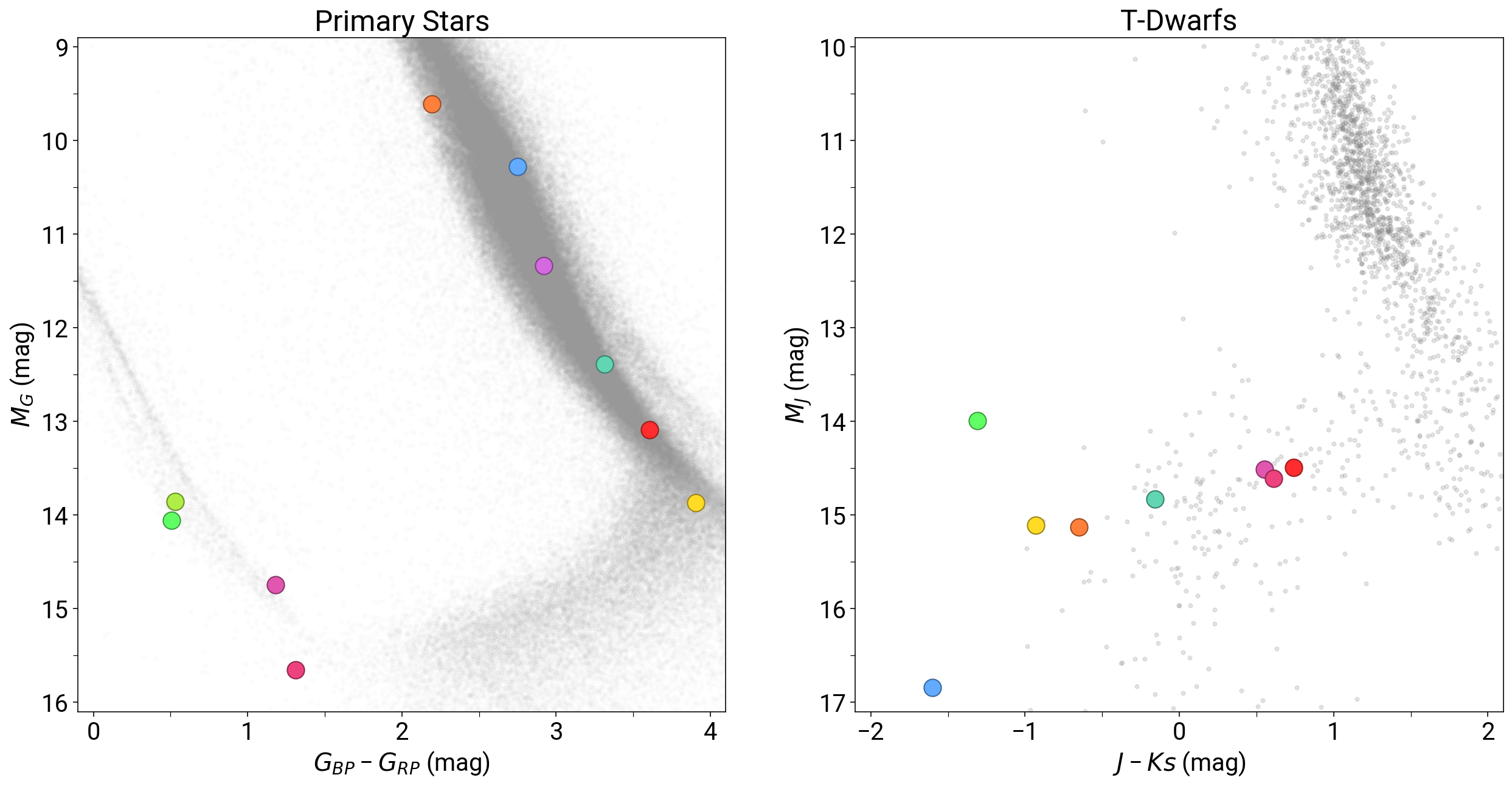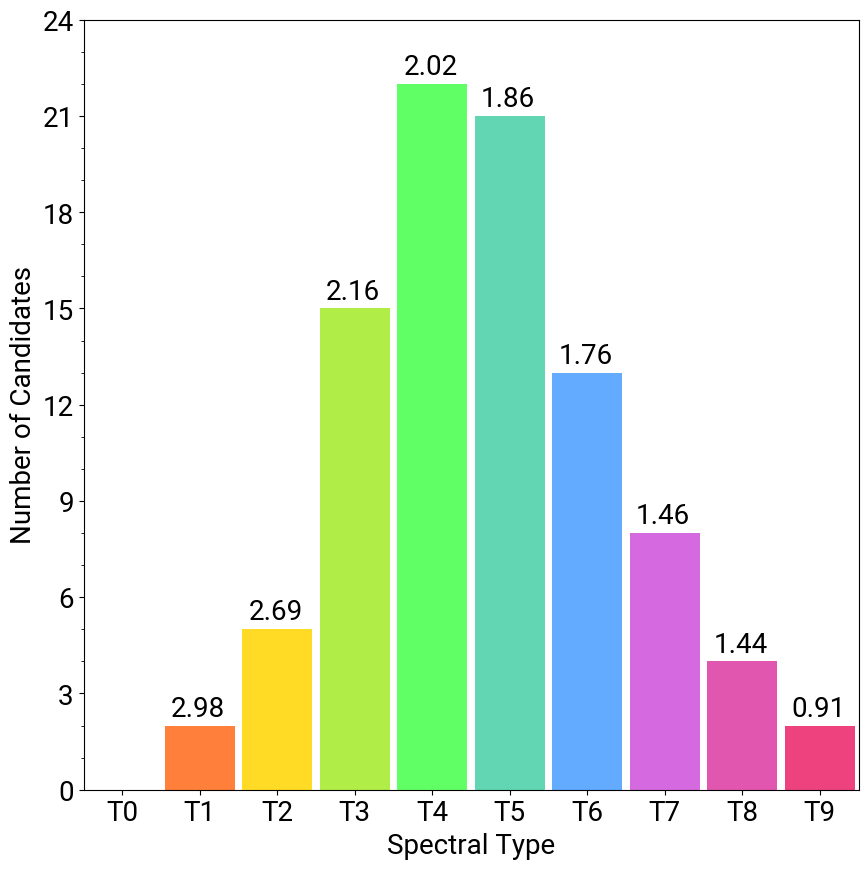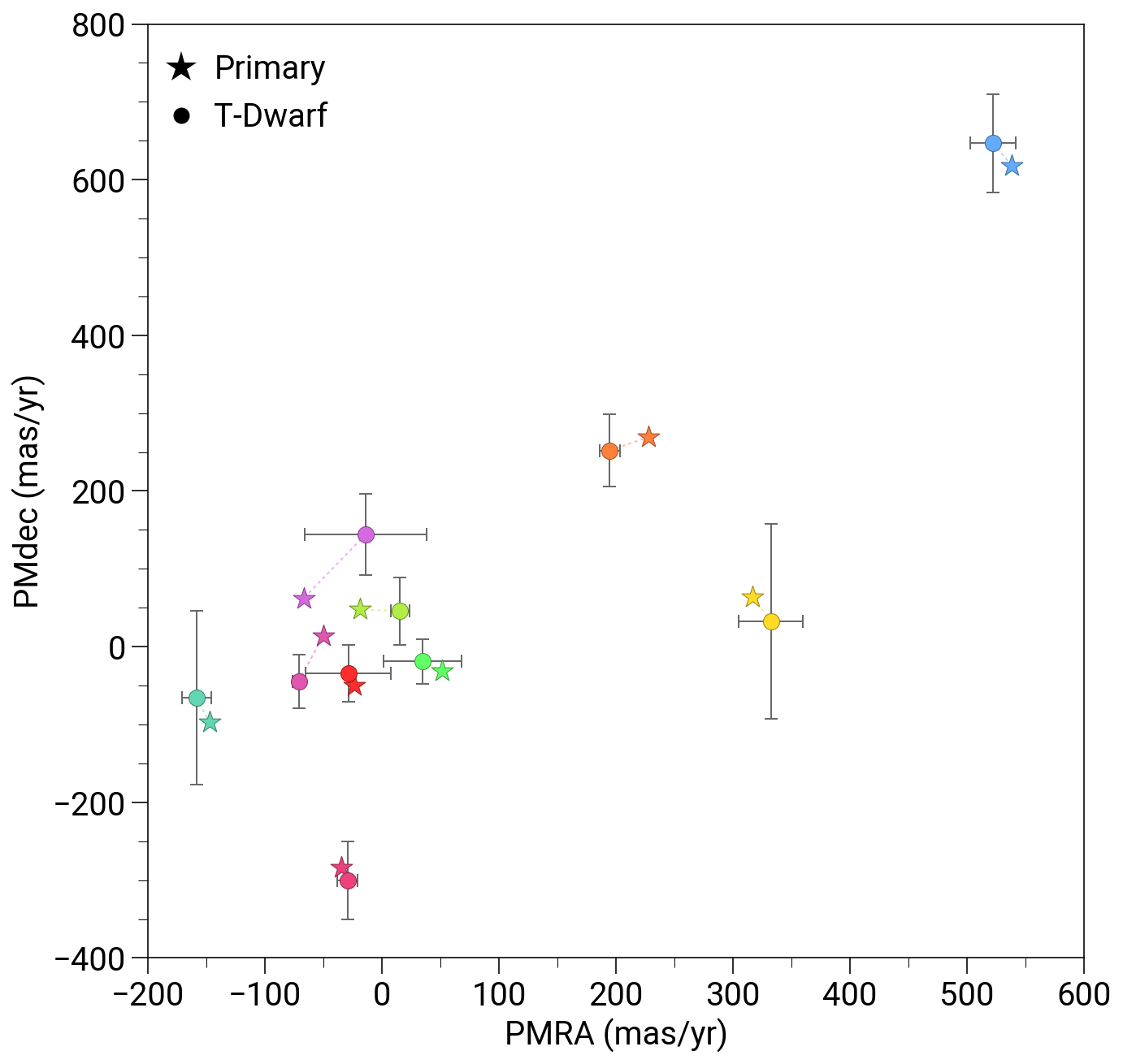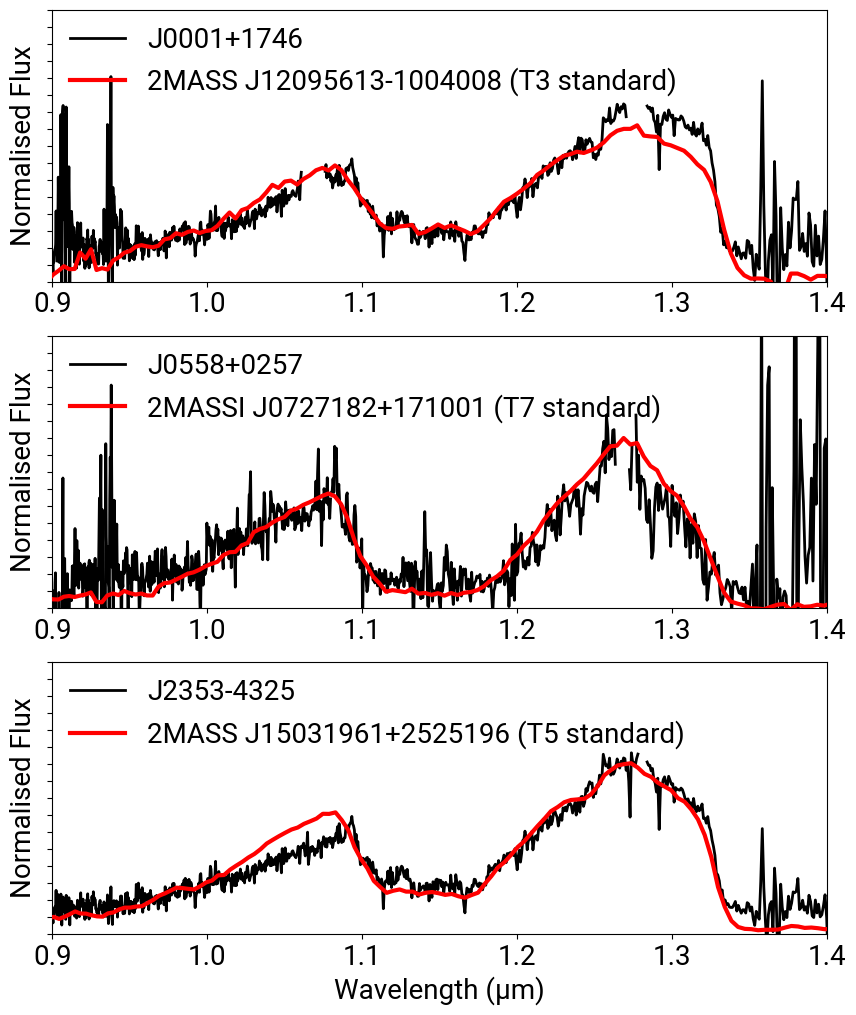Brown dwarfs slowly cool as they age, leading to a degeneracy between their ages, masses and temperatures, and meaning that isolated brown dwarfs can be difficult to characterise (Burrows et al. 2001). By studying brown dwarf companions to Gaia-detected primary stars, we are able to break the age-mass-temperature degeneracy by inferring some of the properties of the brown dwarf from the primary star by assuming the co-evolution of the binary system.
In this work, we use the VHS and DES surveys to detect new candidate T-dwarf companions to Gaia-detected primary stars. Similar searches for T-dwarfs have yielded promising results (see Carnero Rossell et al. 2019, dal Ponte et al. 2023), and this work searches for mid-late T-dwarfs deeper than ever before. With a wider proper motion range than in previous studies, we aim to find T-dwarfs which lie further away, pushing the limits of proper motion accuracies. Ultimately, our sample of T-dwarfs in binary systems can be used to create a set of benchmarks with dynamical masses and ages (Marocco et al. 2017).
.svg)



